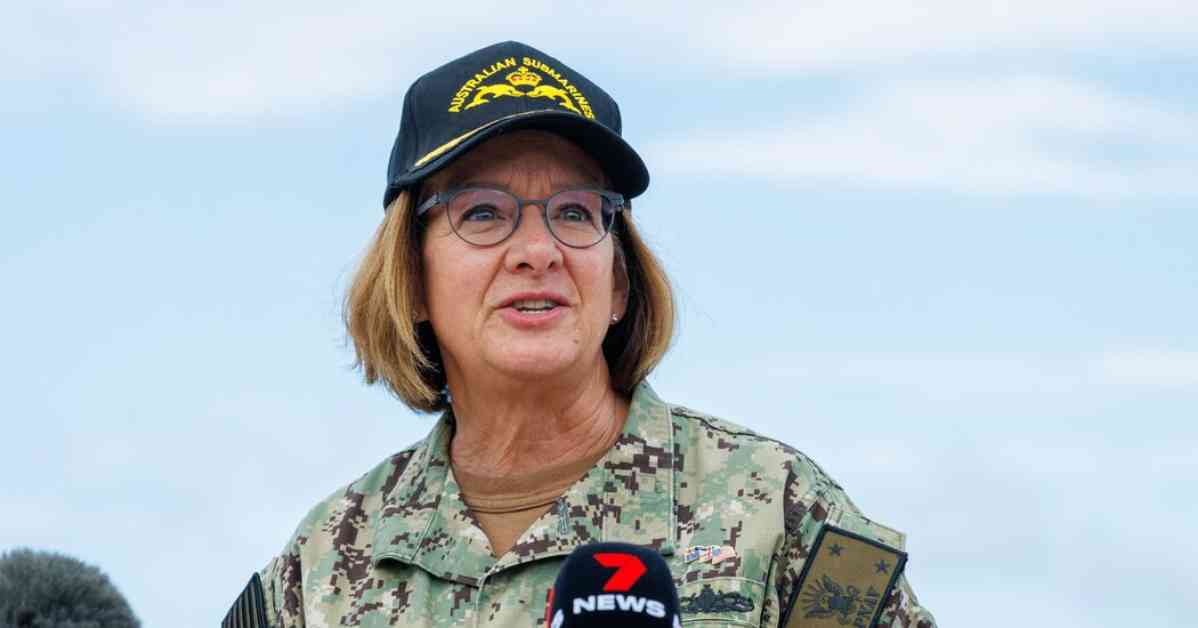Defense Secretary Pete Hegseth made a startling announcement on Friday, shaking the foundation of the U.S. Navy by dismissing Adm. Lisa Franchetti from her role as Chief of Naval Operations. This decision not only marked the removal of the first female officer to reach the Navy’s highest position but also hinted at a broader reshaping of military leadership under President Trump’s administration.
Adm. Lisa Franchetti had dedicated nearly half of her four-decade-long career at sea, holding prestigious commands such as a destroyer, two carrier strike groups, and the U.S. Sixth Fleet. Her impressive track record and significant contributions to the Navy made her a respected figure within the military community. However, despite her stellar achievements, Defense Secretary Hegseth deemed it necessary to seek her replacement.
The news of Admiral Franchetti’s dismissal came swiftly, following President Trump’s decision to fire Gen. Charles Q. Brown Jr., the chairman of the Joint Chiefs of Staff. In a statement sent to reporters late Friday evening, Secretary Hegseth outlined his plans to introduce new leadership across multiple branches of the military. Alongside Adm. Franchetti, Gen. James C. Slife, the Air Force’s vice chief of staff, and the top uniformed lawyers for the Army, Navy, and Air Force were also slated for replacement.
Acknowledging the distinguished careers of Admiral Franchetti and General Slife, Secretary Hegseth expressed gratitude for their service and dedication to the nation. He emphasized the administration’s commitment to instilling a fresh wave of leadership that prioritizes the military’s fundamental mission of deterring, fighting, and winning wars. This strategic shift under President Trump’s direction signaled a deliberate move towards aligning military objectives with the evolving global landscape.
Admiral Franchetti’s journey in the Navy began in 1985 when she received her commission through the Naval Reserve Officer Training Corps program at Northwestern University. Her entry into the Navy occurred just seven years after the historic end to the prohibition on women serving on ships at sea, marking a significant milestone in the Navy’s history. Her rise through the ranks and eventual appointment as Chief of Naval Operations exemplified a remarkable career trajectory that inspired many aspiring military personnel.
As the Navy grapples with the sudden departure of Admiral Franchetti from its top leadership position, the looming question of her successor remains unanswered. The void left by her exit will undoubtedly be felt across the Navy’s ranks, as colleagues and subordinates reflect on her leadership and legacy. The incoming Chief of Naval Operations will inherit a position of immense responsibility, tasked with steering the Navy through uncertain waters and upholding its longstanding traditions of excellence.
In the wake of Admiral Franchetti’s dismissal, the Navy stands at a crossroads, poised for a new chapter under fresh leadership. The impact of this decision reverberates throughout the military landscape, prompting reflections on the dynamics of leadership, succession planning, and the evolving priorities of the armed forces. As the Navy navigates this period of transition, the enduring legacy of Admiral Franchetti serves as a testament to the resilience, dedication, and unwavering commitment of military leaders in shaping the future of our nation’s defense forces.

